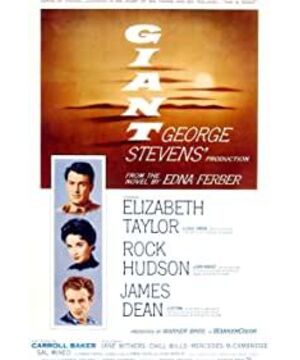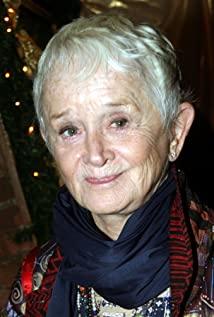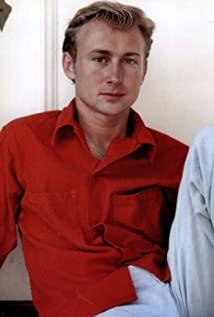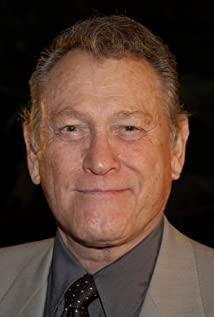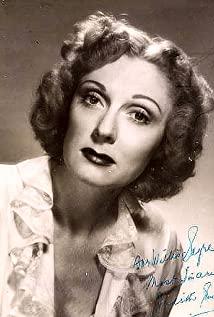In the 1950s, Hollywood’s golden age passed the most glorious mid- to late 1940s, and gradually began to decline. The magic of genre movies gradually faded, and anti-genre movies emerged. In the 1952 Academy Award winner "Noon", Fred Kinneman asked the old Gary Cooper to remove the police badge at the end of the film and throw it on the ground, which meant that the Western film’s usual defense of honor and justice began to disintegrate, although The traditional Western movie star John Wayne dismissed this, but in 1956, he also played a knight who was loaded with too much sentiment, was unbearable and had to be tough, and finally left alone. This is the helpless chant of Ford, the soul of traditional Westerns, in his later years in Westerns—and also his own later years. During this period, younger directors were not only looking for new business models, such as Wheeler, Capra and Stevens who opened their own production company "Freedom", but also looking for new film types. Facing the still powerful genre film system, the new genre means a change to the old genre.
In 1953, George Stevens filmed Shane, a western film with almost no gunshots. When Alan Ladd played, he didn't have the vicissitudes of a traditional western cowboy. He looked even a little delicate. His figure was not tall, with blond hair, riding on a horse, with a slight smile, neither heroic nor sophisticated. Although the two contradictory sides in the play are still the opposite of good and evil, the evil side seems to have a good reason: this land should belong to them, because they are the pioneers who came here to reclaim the land. There is another contradiction that has never been seen in Western movies before, that is, people’s attitude towards guns. In Wyoming of Wilderness, you can no longer see groups of cowboys walking around with guys. People have a strong sense of the power of weapons. Suspected, more people are beginning to realize the existence of the law. As a result, the traditional "guns have the final say" rules began to face the challenge of "federal laws have the final say". People began to realize their rights and the differences of the times. In order to defeat the opponent, the anti-corner needs to invite a gunman from far away. This is a scene that would never be seen in traditional Western movies, and even a little cowardly. But it is this change that marks the subversion of the Wild Wilderness to the traditional western films: it has clearly introduced the concept of law and the country (the people in the film commemorate the July 4th Independence Day), people no longer advocate force and change Believing in justice, although Shane used a few shots at the end of the film to deal with the bad guys in the way of a western cowboy, he had to accept the fact that his time has passed. The glory of the lone ranger has become a legend in the eyes of children, but no longer an adult. With the weapon on the waist, or the ripples in the eyes of a woman, when Shane hit a stone several feet away with a beautiful shot, everything seemed a little funny, like acrobatics. There are many symbolic scenes in the film that show the destruction of old things, such as Shane and Joe jointly tearing down the wooden stake, etc., it should be said that Stevens, who is known for his delicacy, is deliberately arranging.
The Wild Wilderness may just solve the traditional combative cowboys. George Stevens’ ambitions do not stop there. In 1956, he filmed the grand "Giant" Giant, which completely destroyed the landscape visually. Traditional westerns. The film starts with the western cattle herd, and gradually melts into the scene of Jordan sitting on the train played by Locke Hudson, then the grassy Maryland, modern vehicles such as cars and trains come into view, and then the British aristocracy. Great knights and noble steeds, and then Leslie's luxurious home. The East Coast atmosphere completely dispels people's subjective imagination: Is this a Western movie? This is more like a novel by Jane Austen, the beautiful daughters of a wealthy family who are determined to marry their daughters to the rich mother and the wise and elegant father.
Soon, Stevens took us back to the vast west. This is the 20th century, but the cowboys in Texas are still as simple and unrestrained as their parents, and even a little rude. At this time, the contradiction that Stevens arranged was not a contradiction between good and evil, but a contradiction between Eastern civilization and Western tradition. Leslie fainted when others ate calf brains. Luz couldn’t understand the eastern taste of Leslie. In the end, Leslie This changed and Luz died.
At the same time, Stevens arranged for a second contradiction: the estrangement between whites and Mexicans. At this time, Stevens was not at all hostile to the Indians like Ford, but used one. A modern and even some advanced racial equality thinking to deal with this problem (you know, the peak of the civil rights movement was in the 1960s), Leslie, played by Elizabeth Taylor, used her own actions to resolve this unequal barrier, thereby again Another common pair that has changed traditional Westerns is the immediate racial opposition.
Next, Stevens arranged for the third contradiction. Jett, played by James Dean, used a piece of land given to him by Luz to extract oil. He suddenly became rich and became a tycoon. Jordan, who looked down on Jett, still adhered to the tradition. Cattle industry. This contradiction also represents the opposition between tradition and modernity. In the beginning, Stevens painted for us, the grand landscape of low wind and grass was replaced by oil wells everywhere, and Jordan finally had to agree to his own family under the persuasion of family members. This kind of change also represents the demise of tradition. There are no cowboys and even cows. Texans no longer graze their animals and start an oil business. This is the end of the cowboy story.
Maybe Stevens didn’t feel cruel enough for this end. He arranged another contradiction on top of it. Jordan and his children, especially his son, Jordan, was hugged by his father soon after he was born. Riding a horse, he was so scared that he fell into his mother’s arms and cried. The angry old Jordan couldn’t help it. After he grew up, he was unwilling to accept the family’s inheritance rights. This kind of end cannot be said to be incomplete.
George Stevens dug a grave for the traditional westerns in Giant, covered the coffin, buried it in loess, inserted tombstones, and had a wreath of eulogy. Although this film is too grand, many places are superficial and lack Stevens's consistent meticulousness, but its historical status and significance cannot be ignored. Prior to these two films, Stevens didn’t have many masterpieces. The swing time in the 1930s relied on the dance skills of Astaire and Kingis. In 51, there was a sunny day very hard, but it seemed to be There is no literary depth that can surpass the original. He also failed to produce any great works after the biography of the giant. It should be said that only these two westerns that ring the bell for the westerns at sunset are the most important and valuable works of his film career. Although he has no new ideas in narrative and no creation in technique (Stevens can even say that he has no technique. He shoots all the scenes from all angles, and then chooses the good-looking ones when editing. ), but he chose the appropriate script at the appropriate time and shot works that show the changes of the times. This strong sense of the times enabled him to occupy a place in the 50s when the old and the new were mixed, and he was selected in 55 years. Dean of the college.
When the bell struck in the late 1950s, Westerns really became a legend, and the times have still entered the museum. When the studio draws an end to this legend from the source, we can hardly even hear the lingering sound of the bell. Looking for it.
View more about Giant reviews


